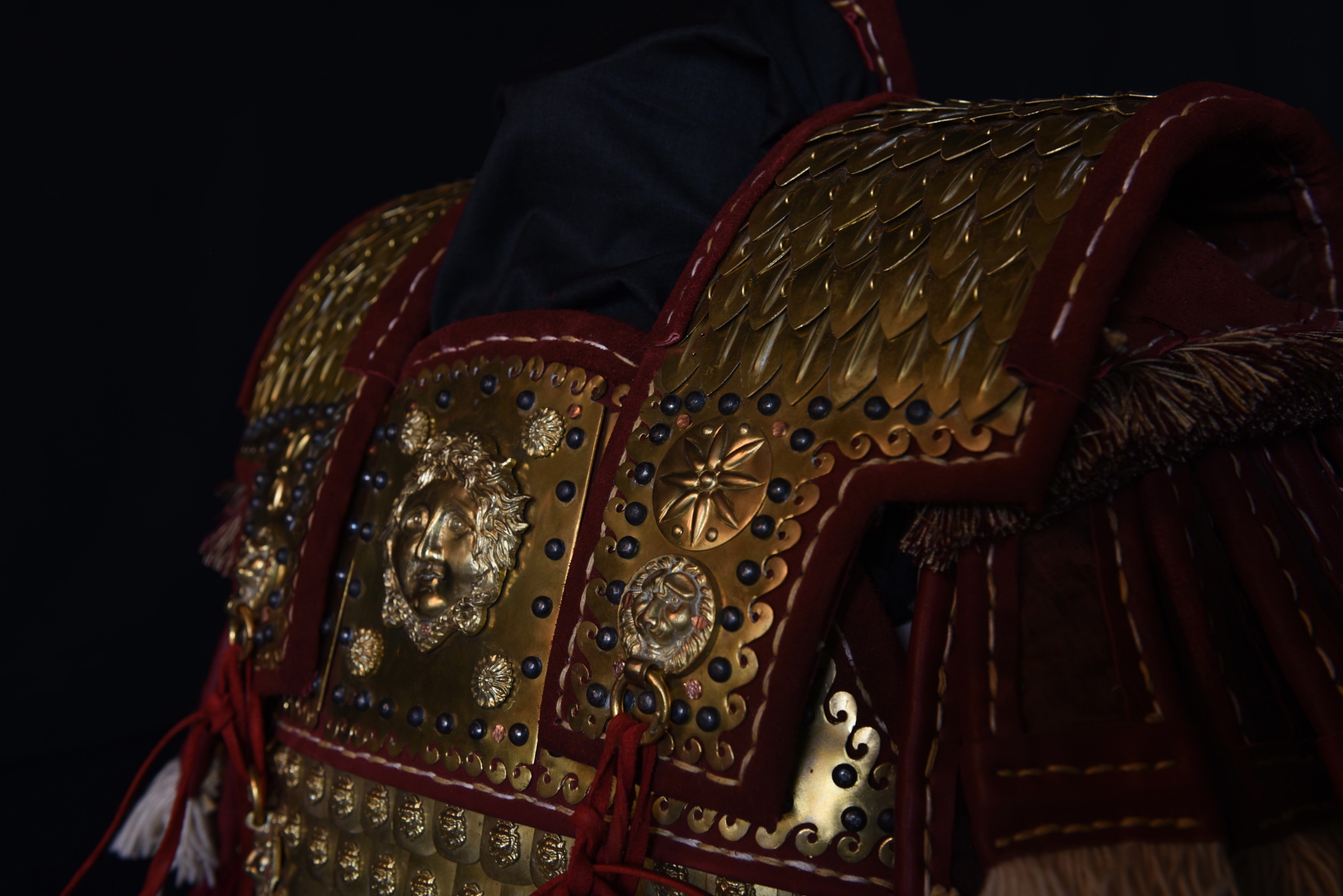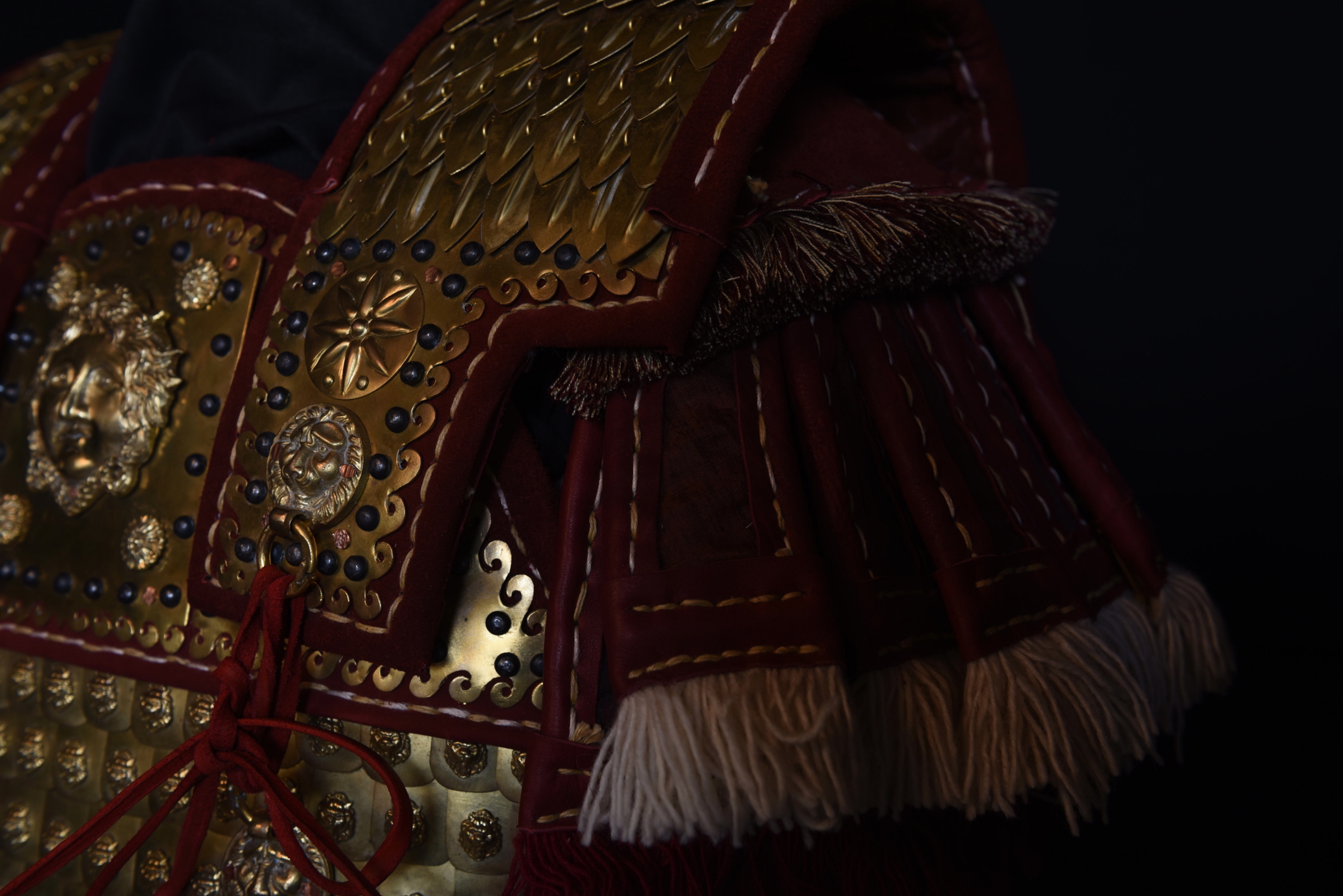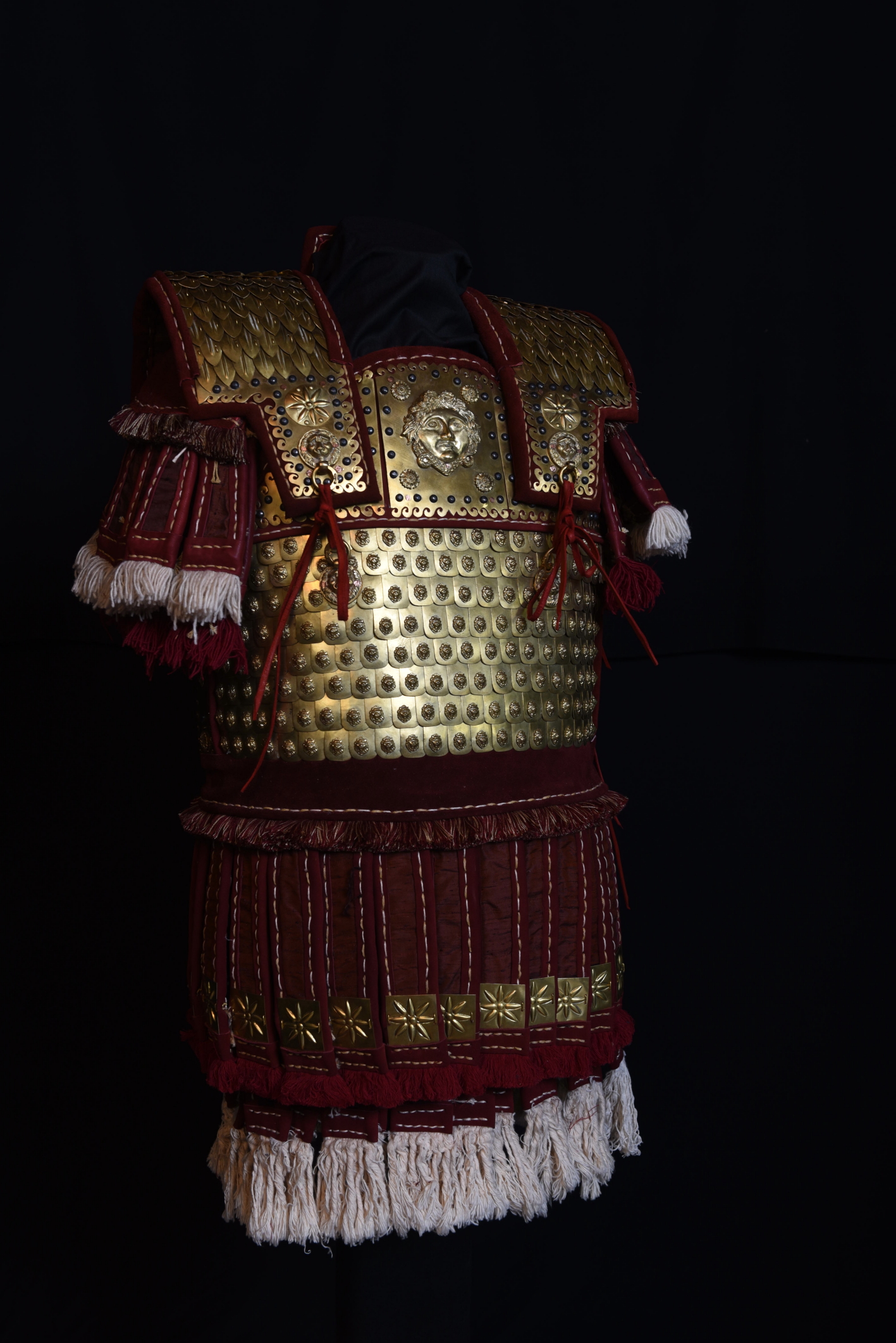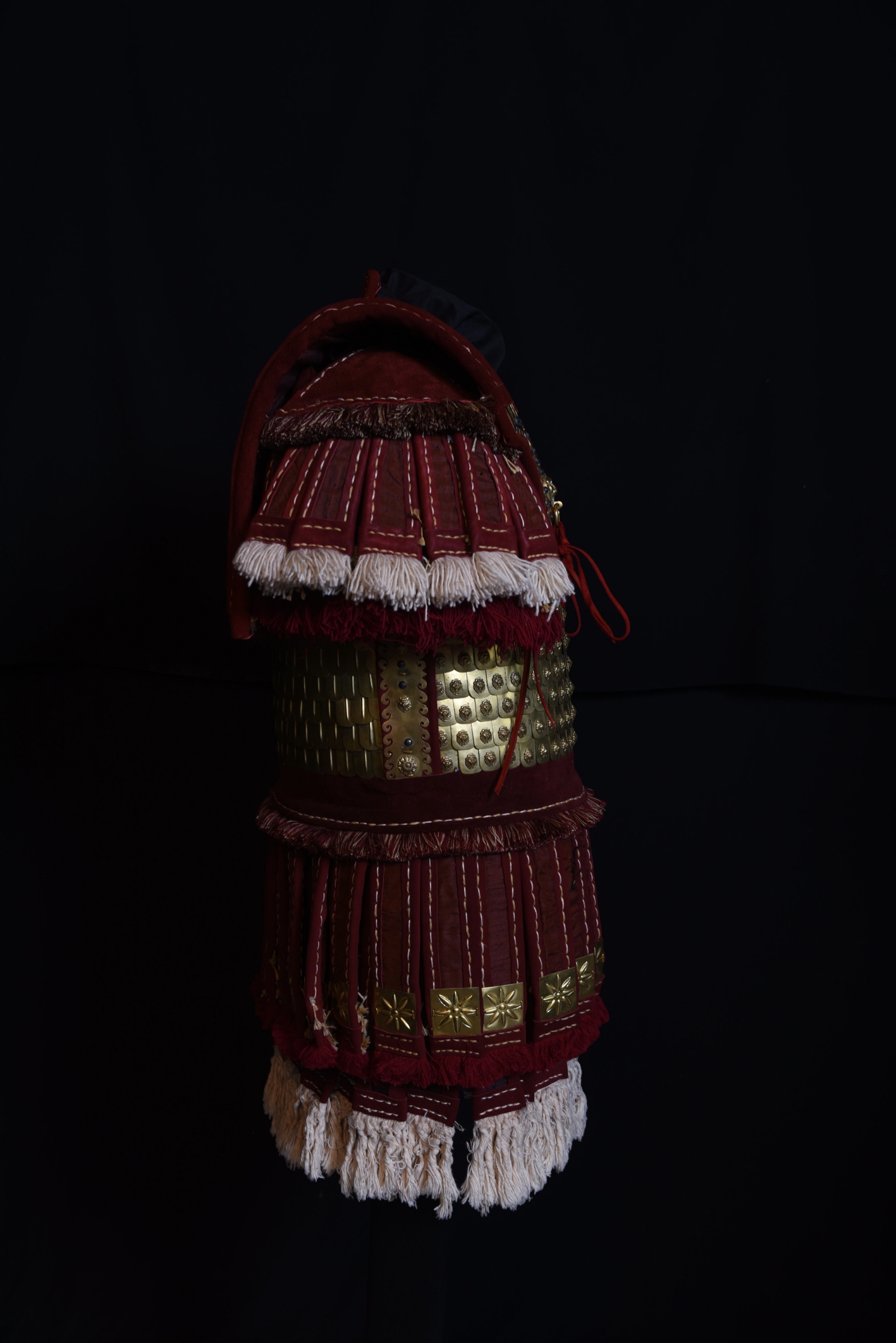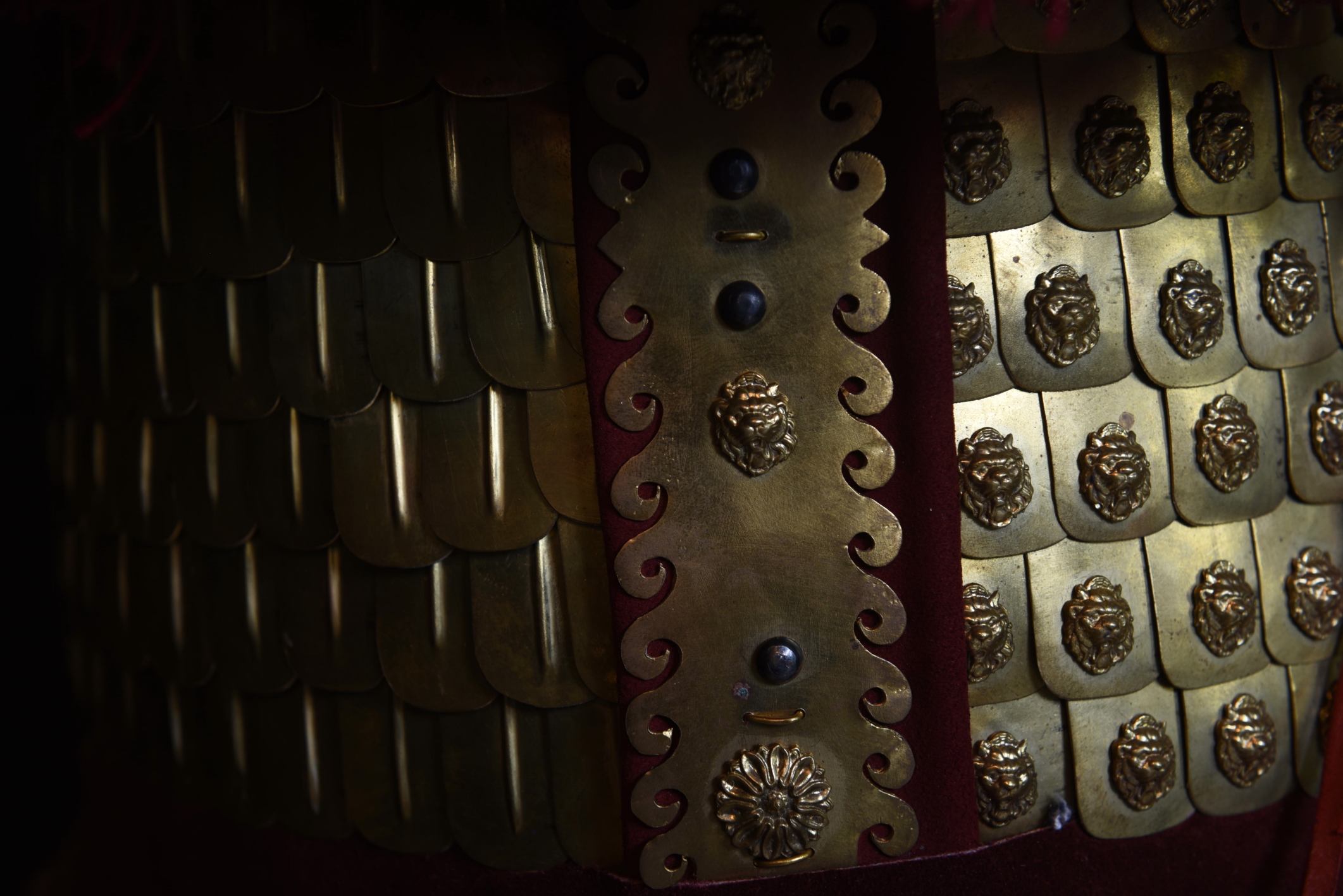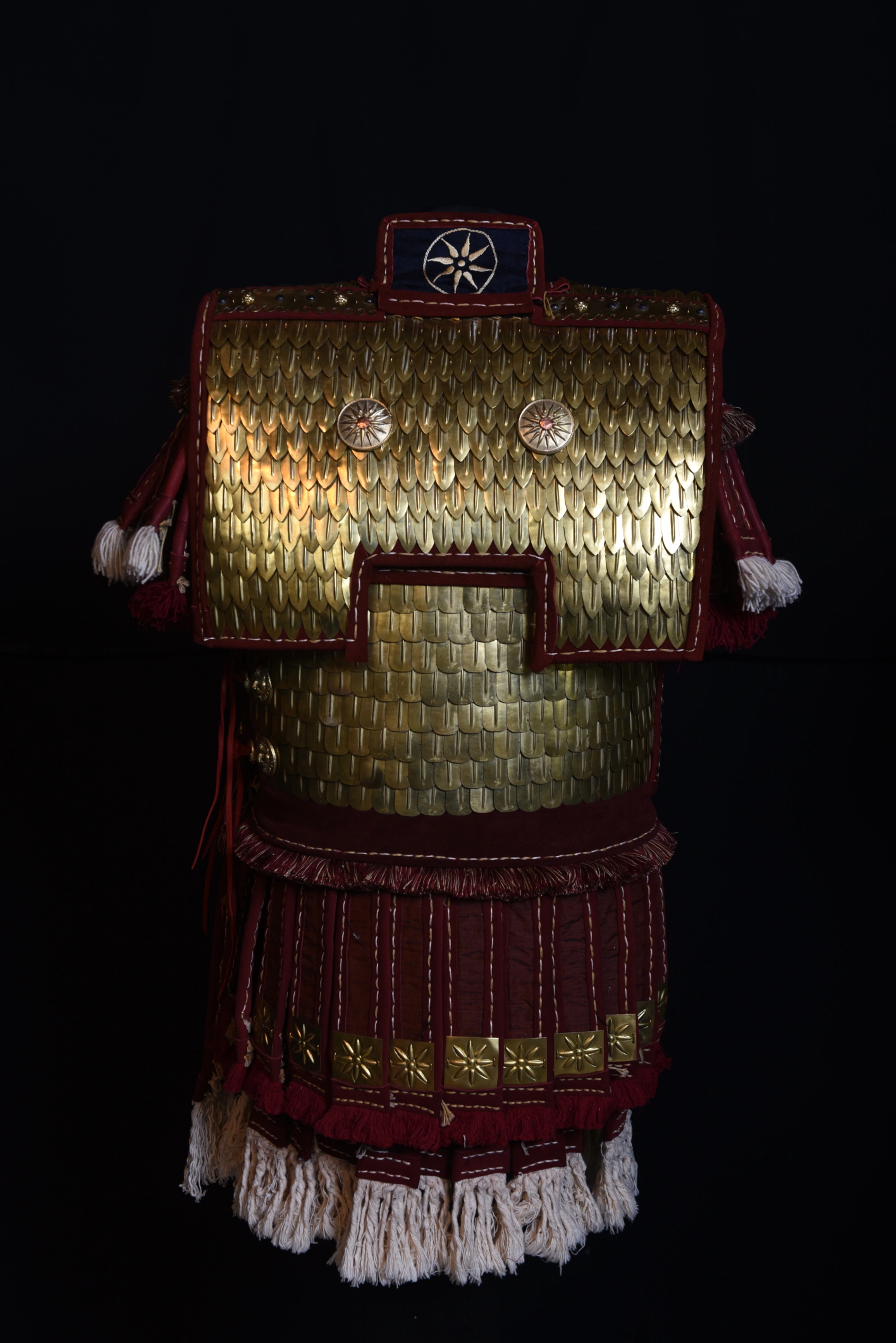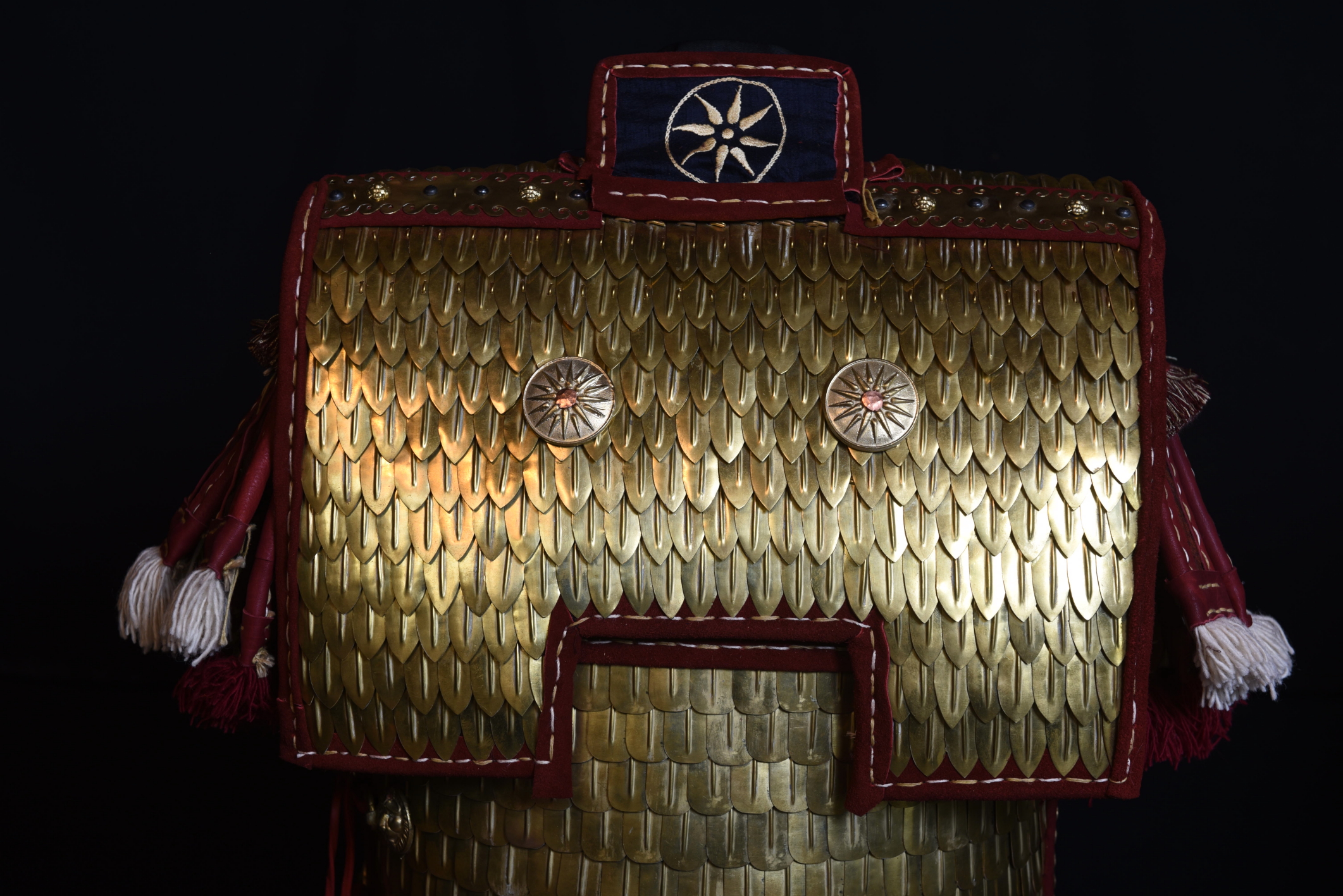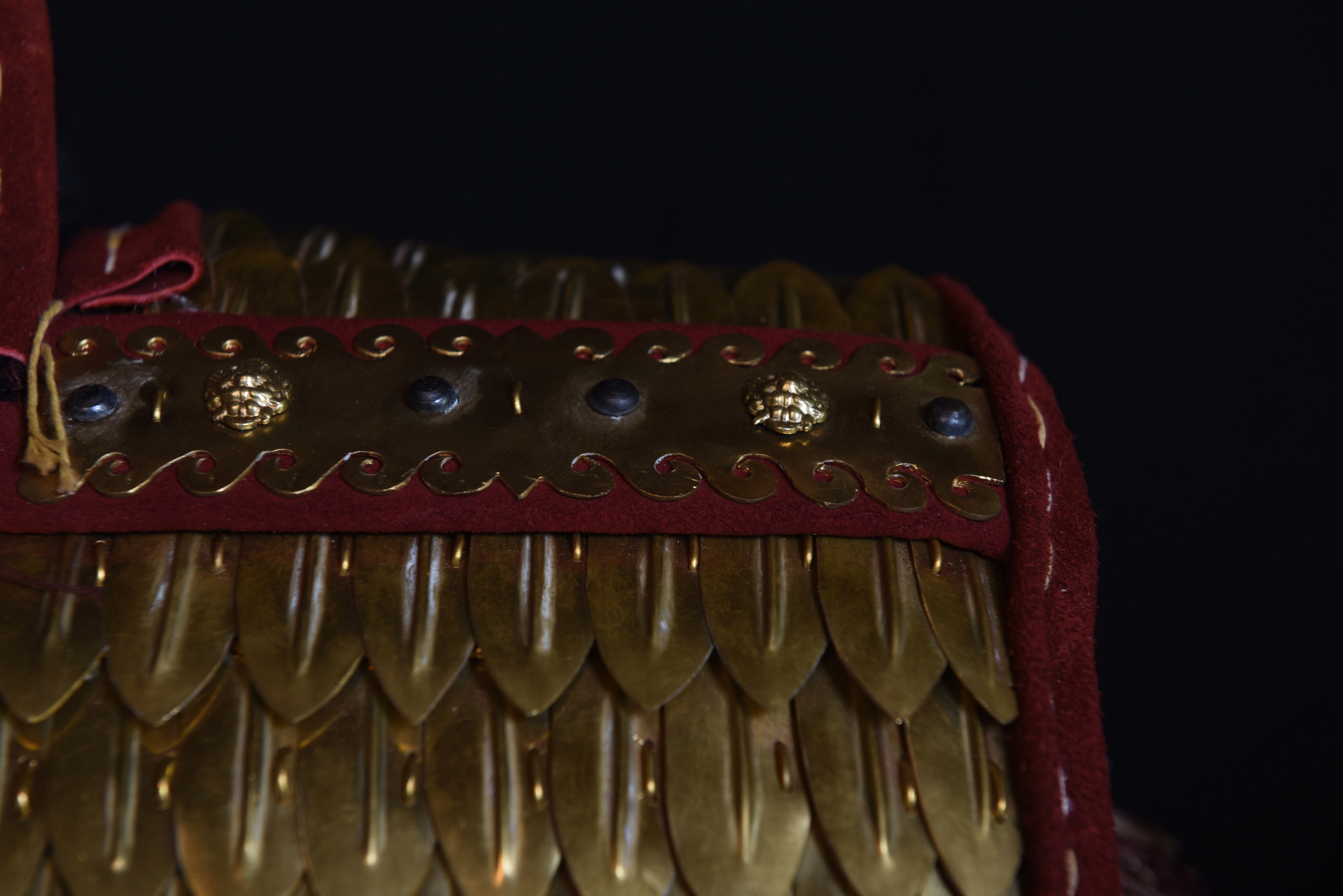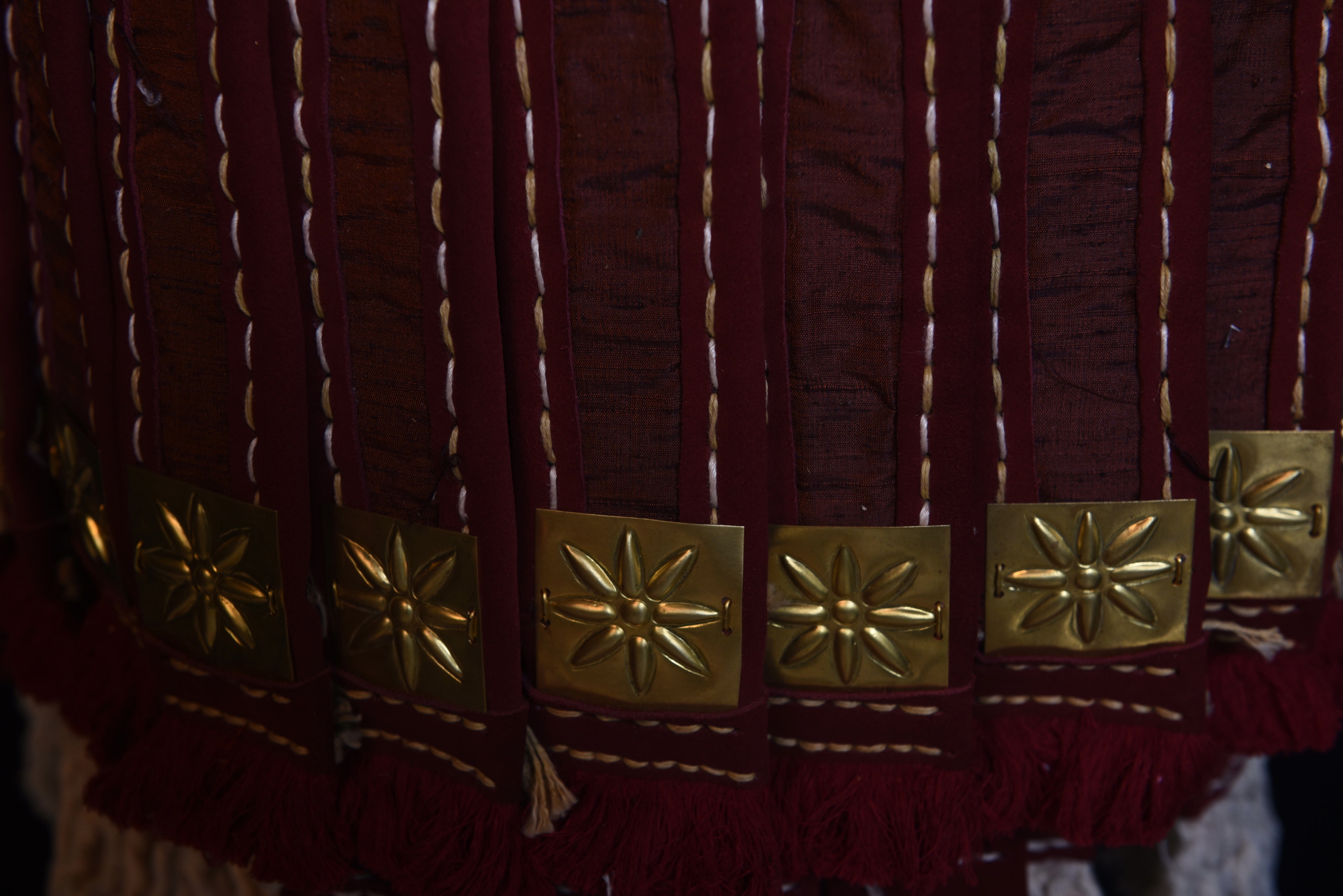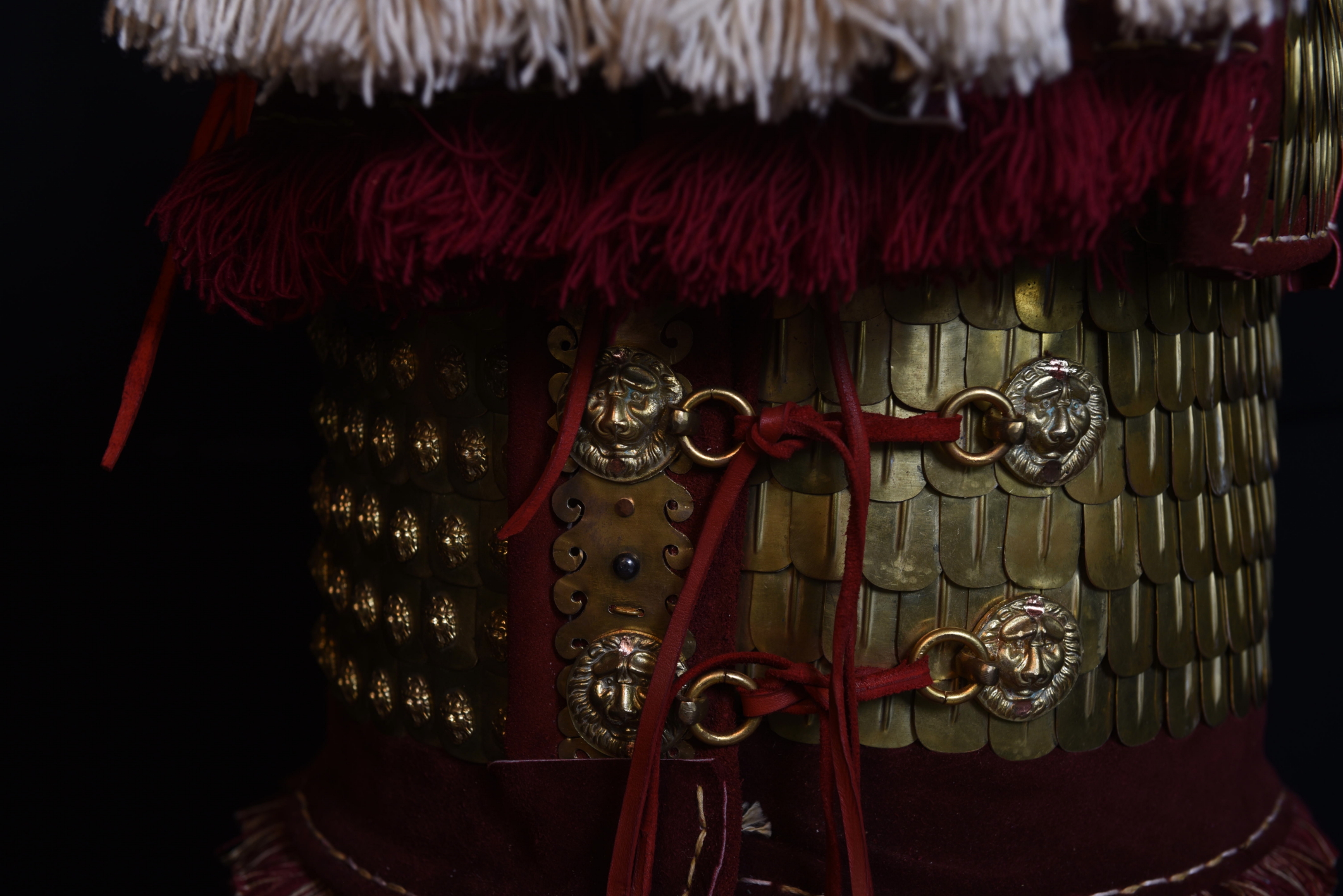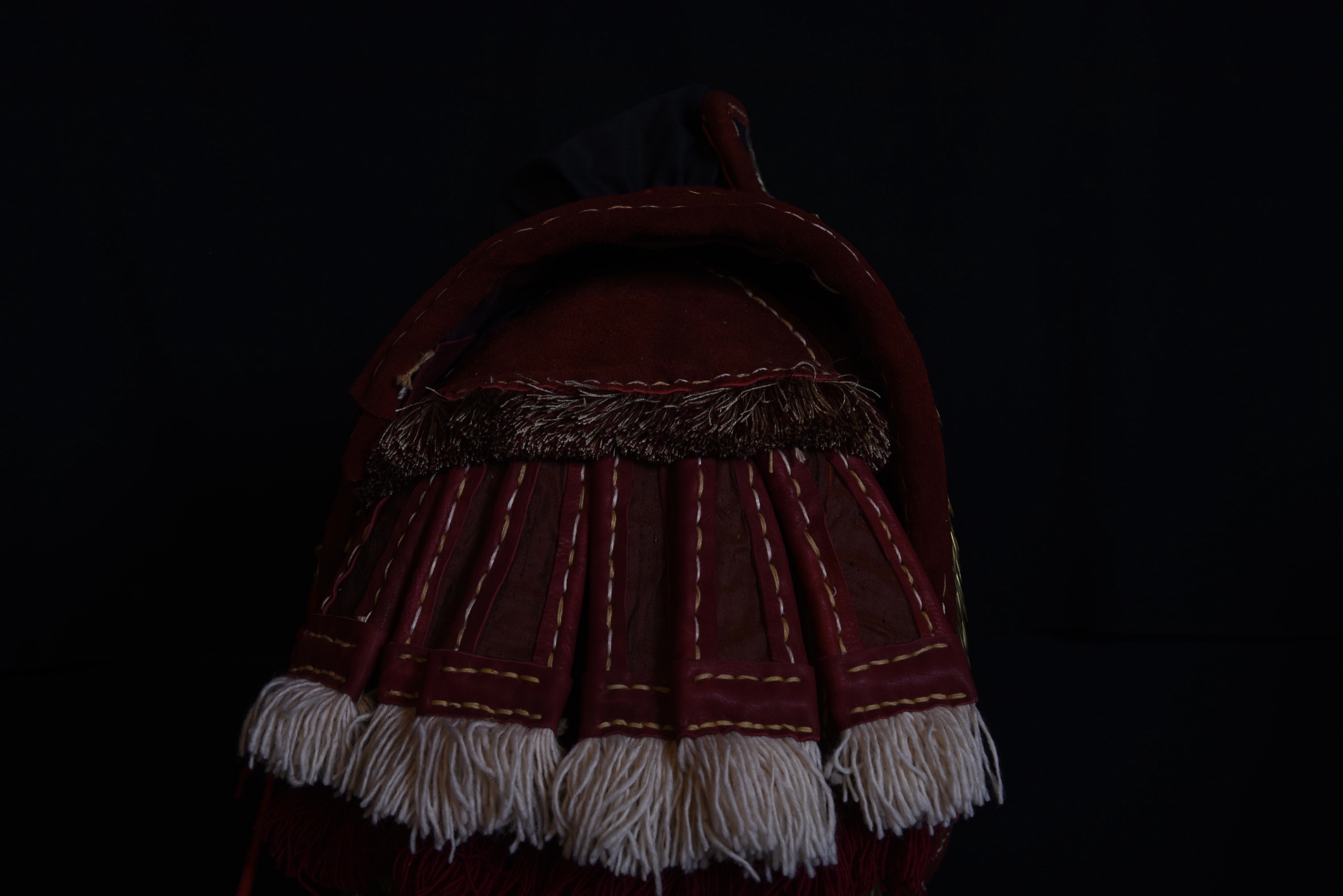Ancient Greek Armors
Linothorax of Alexander the Great (third version)
Battle of Issus in 333 BC
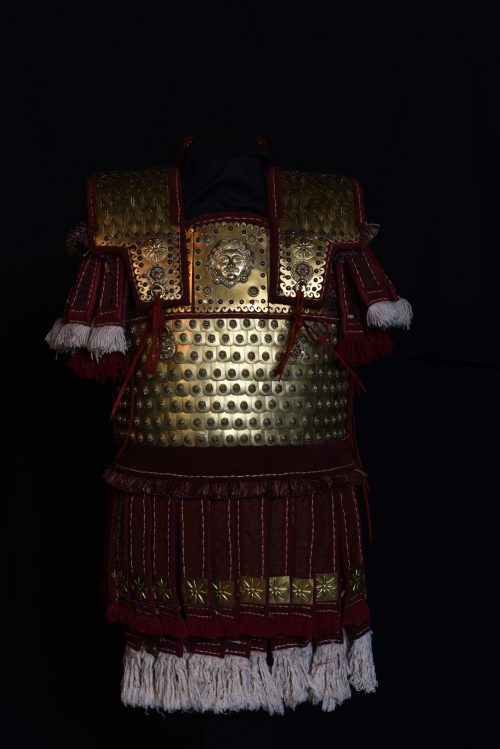
a warrior” in Greek) literally means linen breastplate and denotes a warrior “wearing a breastplate of linen”. The earliest attested account of a linothorax used in battle is recorded and described briefly in Book 2 of Homer’s Iliad (2.529 and 2.830) as worn by Ajax the Lesser, as cited by Xenophon the Athenian. It is also mentioned in other sources such as Herodotus (2.182, 3.47, 7.63), Livy (4.19.2–20.7), Strabo (Geography, 3.3.6, 13.1.10) and many other minor sources. Apparently is was made primarily out of layers of linen cloth glued together to form a relatively stiff but lightweight cuirass, which was infinitely more comfortable to wear than a metal one.
There are numerous surviving depictions of linothorax-wearing warriors from antiquity in vase and tomb paintings, wall frescoes and sculptural reliefs which have been unearthed in Greece, Asia Minor, the Middle East etc. Its high point in artistic depictions corresponds with the time of the Persian Wars (early 5th century BC) a fact that attests its important contribution to the Hellenic victory against the mighty Persian empire. Gradually replacing the popular bell and later muscled cuirass, linen armour became the standard defensive gear of the Greek city state hoplite armies.
By the time of the catastrophic Peloponnesian War it was in use in several variations and minor typologies something that did not change for the next half millennium, seemingly flourishing well into the Hellenistic Kingdoms.
Undoubtedly the most famous image of this kind of body armour is the Alexander Mosaic, the socalled Pompeii Mosaic (1st century AD) a Roman copy of a Hellenistic Greek painting which most probably dated back to the 3rd century BC. It is the mosaic that depicts the Macedonian King attacking Darius in the Battle of Issus in 333 BC. Alexander the Great is certainly the best known figure of Greek historiography. His relatively small (never more than 45,000 men) army of seasoned veterans and the tactics employed by one of history’s greatest tacticians made possible the unimaginable: the conquest of the then known western world, spanning from the Greek mainland to the Libyan desert and on to western India to create the equivalent of a Hellenic
Ecumenical Commonwealth. To choose a Linothorax armour on the battlefields is testament to the high popularity and quality of this specific kind of personal protection.
From a stylistic point of view, the reconstruction was based on the composite organic armour that is depicted on this very mosaic. Τhe top shoulder protection (he top shoulder protection (epomydes) covers the upper back and shoulders and is tied down to the chest area. It consists of a thick linen background that has been covered with approximately 400 bronze, ridged scales (of two types).
These are strongly attached with bronze staples on the fabric substratum thus providing unified protection with overlapping small bronze pieces.
For aesthetic and practical reasons the width of the scales of the front shoulder pads are smaller than those of the back. At the ends of the two front shoulder protective elements we find a pair of bronze lion head loops rested in bronze bases with kymation (wavy) ornaments at the fringes. The upper part of the armour is strongly attached to the torso with thick leather thongs (two pairs of
fastening mechanism). Two characteristic suns of the royal house of Macedon, in embossed bronze, function as a keystone for securing the shoulder defenses to the main body in the rear upper region. Another royal sun emblem made of silk embellishes the back of the neck protection.
The rim of the epomydes has been folded with purple leather handstiching. The leather wings protruding from the two shoulders openings are not attached directly to the shoulder bridges but comprise a separate defensive addition which is fastened separately to the torso of the warrior.
Folded leather has also been applied to their lateral rim together with ornamental fringe elements.
The main element of the armour wraps around the waist of the wearer and covers the entire torso. It retains a characteristic anatomical shape and has been covered entirely by two types of rectangular overlapping bronze scales. The scales of the front bear small, cast, lion head ornaments, modelled on the lion-like mythical portrait of Alexander. A pair of lion-shaped fastening points are also in the middle of the front and three more similar pairs are attached to
the lateral edges in the area below the left armpit (five pairs of loops in total comprise the fastening system of the linothorax). The upper chest area has three anatomical bronze plates with decorative wavy kymation elements at their rim attached with rivets on the substrate linen. In the middle of the central plate there is a cast apotropaic (evil-warding) Gorgoneion (Medusa head)
which has been fixed in accordance with the contemporary artistic requirements of the 4th century BC. All the rims of the torso have been folded over with purple leather by handstiching.
The torso and shoulder protection insides have been padded with wool and silk fabric. A leather war belt around the torso with a characteristic griffin-themed bronze buckle completes the set.
The wings (the pteryges mentioned by Xenophon in the Anabasis 4.7.15) which cover the groin and upper thigh area in double ovelapping rows, are made of thick linen covered with durable silk fabric for added luxury. All the lateral rims of the strips have been covered with leather, their edges bearing decorative fringes. The lower part of the first row of “pteryges” has been adorned with bronze royal Macedonian suns for extra decoration.
This very third version is being considered the most luxurious version of Alexander’s Linothorax.The artistic synthesis has been fabricated by Dimitrios exclusively using traditional methods.
